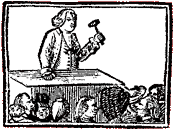Yesterday’s Boston Globe ran two opinion pieces about the National Popular Vote bill now under consideration in the Massachusetts and other state legislatures. Both writers support the idea of ensuring the U.S. President is elected by a majority, or at least plurality, of American voters. “Consent of the governed,” the Declaration of Independence called that, and folks disagree with the notion only when they’ve noticed that it would block their preferred candidate from taking office.
The two opinion writers disagree on how the country should enact change to the Electoral College’s operations, whether through constitutional amendment or state laws. Pam Wilmot, executive director of Massachusetts Common Cause, wrote:
The National Popular Vote bill uses the states’ existing constitutional authority to choose the manner of selecting its presidential electors and the states’ existing authority to enter into legally enforceable joint agreements with other states to reach the goal of electing the president using the popular vote in all 50 states.
Under National Popular Vote, the agreement would take effect only when identical enabling legislation has been enacted by states collectively possessing a majority of the electoral college—that is 270 of the 538 electoral votes, roughly equal to half of the population. These states agree to give all of their electoral votes to the winner of the national popular vote in all 50 states, thereby guaranteeing the popular vote winner a supermajority in the Electoral College.
Martin G. Evans, a retired Canadian business professor who has
a lot of other opinions as well,
argued:
Although the Constitution reserves to the states the procedures that they use to select their representatives in the Electoral College, there are a number of other constitutional issues that would have to be decided by the courts:
For a state in the compact, it could be argued that the due process rights of voters were being violated if the electors went against the state's own balance of party strength.
For a state outside the compact, it is clear that voters' rights are diminished because they would not have an equal right to affect the selection of the president in the Electoral College.
Finally, if a state decided to withdraw at the last minute—something forbidden by the compact—and instruct its electors to cast their votes for the winner of the state rather than for the winner of the national popular vote, it is possible that its action would be sustained by the courts because the Constitution gives the states autonomy to decide the manner of choosing and instructing its electors.
I don’t think Prof. Evans’s first two arguments hold up, while the last is an unlikely contingency. The Electoral College was never designed to ensure an “equal right” for voters or (as he wrote before this quoted passage) to provide “checks and balances.” The Electoral College has always been a thumb on the scale in favor of states with fewer voters; it has thus always given voters
unequal rights and thrown the voting system
off balance.
The Electoral College was also a way of removing the choice of President two or three steps from ordinary citizens. But since it was never a deliberative body (each state’s electors meet separately), it doesn’t offer the benefits of representational democracy.
Even so, the Electoral College
never worked as the men of the Constitutional Convention expected in a contested election. The formation of political parties undermined the original system as soon as
George Washington retired. In 1796 the Electoral College seated rivals as President and Vice President. Four years later, the man most electors wanted to be President nearly didn’t get that office. Before the next election, the states passed the
Twelfth Amendment to fix the system.
But that still didn’t make the consent of the governed paramount in choosing a President. By then some states (including Massachusetts) were passing laws to assign all their electors to the local winner rather than proportionately, giving some voters even less influence than before. Combine that with the disproportionate Electoral vote for small states, and four Presidents and four Vice Presidents have taken office clearly lacking the consent of the governed.
Supreme Court decisions have held that state governments can choose electors however they choose. The National Popular Vote plan would take that undemocratic aspect of the system and put it to good use at last by ensuring that the consent of the governed matters. Yes, it would be more permanent to change the Constitution by amendment, and we could do that as well. But time’s passing. We’ve given the current, flawed system two hundred years. It’s time we made the Electoral College an empty ritual.
This afternoon I was at the Massachusetts Historical Society, studying the print edition of its Robert Treat Paine Papers. A couple of letters from the second volume struck me as shedding unusual light on Paine’s marriage to Sally Cobb.






